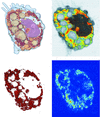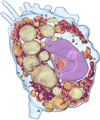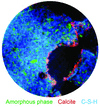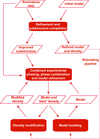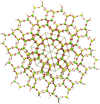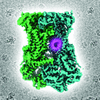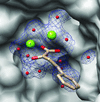issue contents
March 2018 issue

editorial
BIOLOGY | MEDICINE
Advances in crystallography and cryo-EM promise to further enhance the proud role crystallography has played in the development of new medicines.
scientific commentaries
BIOLOGY | MEDICINE
Diffuse scattering provides evidence that variations are correlated across molecular boundaries in macromolecular crystals.
NEUTRON | SYNCHROTRON
A multi-model X-ray imaging approach was implemented to probe the interaction of nanomaterials with a mammalian cell in three dimensions. With further developments, this approach could have an impact on nanomedicine and nanotoxicology.
research letters
CHEMISTRY | CRYSTENG
A comprehensive list of organic crystalline polymorphs has been assembled using the Cambridge Structural Database (CSD) and the structures categorized by crystal type, uncovering significant variations in the polymorphism prevalence of each group. Phenomena such as the high prevalence of temperature-induced phase transitions in organic salts and the diminishing percentage of polymorphic crystal entries in the CSD over the last 20 years, with the exception of cocrystals, highlight areas of prospective study.
research papers
BIOLOGY | MEDICINE
New insight into the nature of protein crystal lattices is proposed.
NEUTRON | SYNCHROTRON
A single-cell imaging technique has been demonstrated by combining dual-energy contrast X-ray microscopy and an iterative tomographic algorithm called equally sloped tomography. The technique can simultaneously observe cellular ultrastructures and nanomaterial distributions.
MATERIALS | COMPUTATION
Both a cured cement paste and a paste undergoing in situ hydration have been characterized using state-of-the-art synchrotron diffraction tomography. The mineralogy, macroporosity and carbonation phenomena of the samples have been determined.
MATERIALS | COMPUTATION
Download citation


Download citation


Ta2NiSe5 has recently attracted interest as an excitonic insulator. In this paper, crystallographic parameters of three non-ambient phases are reported from across the P–T phase diagram. A reversible pressure-induced structural transition above 3 GPa is associated with the coherent sliding of weakly coupled layers.
BIOLOGY | MEDICINE
A new algorithm automatically determines the structures of large macromolecules of unknown fold from low-resolution single-wavelength anomalous X-ray data and a partial model that failed with other methods.
BIOLOGY | MEDICINE
A molecular-dynamics simulation of diffuse X-ray scattering from staphylococcal nuclease crystals is greatly improved when the unit-cell model is expanded to a 2 × 2 × 2 layout of eight unit cells. The dynamics are dominated by internal protein motions rather than rigid packing interactions.
CHEMISTRY | CRYSTENG
Download citation


Download citation


This work demonstrates how small changes in the structural connectivity, arising from two different types of carboxylate bonding of benzene-1,4-dicarboxylate ligands to zinc(II), have an impact on the overall structural, physical and photochemical properties in two isomeric double-pillared-layer coordination polymeric structures.
NEUTRON | SYNCHROTRON
Download citation


Download citation


An EIGER detector with 256 × 256 pixels has been used to collect electron diffraction data from a SAPO-34 crystal. The data quality from the EIGER detector is comparable with other hybrid pixel detectors available for electron diffraction.
CCDC reference: 1817054
CRYO | EM
Structures of inhibitor-bound bovine cytochrome bc1 were determined by cryo-EM and compared with X-ray crystallographic structures, demonstrating that cryo-EM could be a feasible tool for structure-based drug discovery.
BIOLOGY | MEDICINE
A comprehensive comparison of disorder models indicates that intermolecular correlations must be accounted for to explain the diffuse scattering observed from three protein crystals.
BIOLOGY | MEDICINE
Crystal structures of the endonuclease domain of Lymphocytic choriomeningitis virus (LCMV) in complex with two diketo-acid (DKA) compounds were determined. Based on these data and activity assays, two new DKAs with good affinity for the LCMV endonuclease domain were synthesized.



 journal menu
journal menu




 access
access





